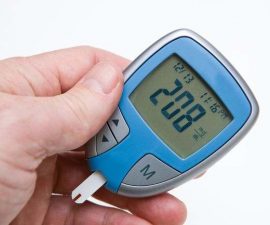Every parent in the world should know and aware of premature birth, so when it happens to you, you are prepared to take the necessary measures to keep the baby safe and healthy. It will be a big challenge but there is always a solution.
A preterm birth is a birth of a baby that takes place more than three weeks before the estimated due date. It occurs before the start of the 37th week of pregnancy. With premature babies, especially for those born very early than the estimated due date, often have plenty of complicated medical problems. The complication may vary, but the theory is the earlier the baby is born the higher risk of complications. Most premature births cases happen in the late preterm stage.
There are four kinds of preterm births, depending on how early the baby is born:
- Late preterm, born between 34 and 36 completed weeks of pregnancy
- Moderately preterm, born between 32 and 34 weeks of pregnancy
- Very preterm, born at less than 32 weeks of pregnancy
- Extremely preterm, born at or before 25 weeks of pregnancy
Symptoms
Recognizing the symptoms of premature birth is crucial to ensure both the mother and the baby are safe and taken care of. The baby may have very mild symptoms or more obvious complications. Here are some of the signs that you should recognize:
- Small size, unlike the head which is a bit bigger.
- Looks sharp, less rounded features compared to a full-term baby. This is caused by the lack of fat stored.
- Fine hair or lanugo covering a big part of the body.
- Body temperature is low, especially right after birth in the delivery room. Again, this is caused by the lack of fat stored inside the body.
- Problems with breathing or respiratory distress.
- Lacking reflexes for sucking and swallowing, will have some difficulties feeding the baby.
What Do They Look Like?
For premature babies born between 36 to 37 weeks, they usually look like a smaller version of full-term babies.
Very premature babies on the other hand look very small and fragile. Their skin might not be fully developed and look shiny, translucent, dry or flaky. The baby may also lack fat under the skin to keep them warm. Their eyelids may be shut at first. But by 30 weeks they should be able to respond to different sights.
Because of the immature development, the baby might not be able to regulate its own body temperature, breathing or heart rate. They may twitch sometimes, or even become stiff or limp to being unable to stay alert. There may be some hair on the baby’s head, but there are lots of soft hair called lanugo on their body. Lastly, the baby’s genitals may be underdeveloped.
Development
Later in their life there may be some complications such as:
- Language delays.
- Movement and growth problems.
- Teeth problems.
- Vision and hearing problems.
- Thinking and learning problems.
- Social and emotional problems.
Risks
Why are some babies being born prematurely? The exact causes of preterm birth are still mostly unknown, precisely in about half of all cases. However, these are some of the reasons babies are being born prematurely:
The risks of premature births are more known compared to the causes. These are known risk factors of premature delivery:
- Have experience of premature delivery before.
- Pregnancy with twins, triplets or more.
- The timing gap between pregnancies is less than six months.
- Conceiving the baby through in vitro fertilization.
- Having problems with uterus, cervix or placenta.
- Smoking cigarettes or consuming illicit drugs.
- Having some kinds of infection, particularly involving amniotic fluid and lower genital tract.
- Some chronic conditions such as high blood pressure and diabetes.
- Being underweight or overweight before pregnancy.
- Being stressed, it can be caused by the death of loved ones or domestic violence.
- Having experience of multiple miscarriages or abortions.
- Physical injuries or traumas.
- For some unknown reason, black women are more likely to experience a premature delivery than women of other races. But remember that premature delivery can happen to anyone, even if they have no known risk factors.
What Happens During Labor?
For premature deliveries, it should be done at a hospital with an NICU. If the hospital doesn’t have an NICU, the mother and the baby should be transferred to another hospital with better equipment. During labor, the mother may be given some medicines to stop the contraction for a while and then the mother will be transferred to another hospital if necessary. The mother may also receive injections of corticosteroids between 12 to 24 hours before the birth to help the baby’s lungs to function more effectively.
For premature babies, the process could be very quick to finish. They’re usually born through the vagina, but in some cases the doctor may decide to do a C-section to deliver the baby safely. Your doctor will have this discussion with you beforehand.
A medical team for the newborn will be on standby, as soon as the baby is born, they will care for the baby inside the same room. Usually they use a neonatal resuscitation bed. The team will try to keep the baby warm and help them to breathe with an oxygen mask or even a breathing tube and some additional medicines will also be administered, since some babies might need help to keep their heart beating with CPR or an injection of adrenalin. Once the baby is stable, they may be transferred to the NICU or SCN.
Prevention
Eventhough the exact cause of premature birthis still mostly unknown, there are some things that you can do to minimize the risk of preterm birth, such as:
- Progesterone supplements – for women who have a history of preterm birth, progesterone supplementation could reduce the risk of preterm birth. Could be used on women with a short cervix.
- Cervical cerclage – is a surgical procedure performed during pregnancy in women with a short cervix or a history of cervical shortening that resulted in the increased factor of preterm birth. During the surgery, the cervix is stitched with strong sutures that could provide extra support to the uterus. The sutures are then removed when it’s time to deliver the baby. Always consult with your doctor about whether you should avoid being active during the rest of the pregnancy or not.
When It’s Over and Time to go Home
The hospital will only allow you to go home when both the mother and the baby are safe and ready. Even at home, you should always communicate with the medical staff about how to take care of the baby. This is very crucial with premature birth.




